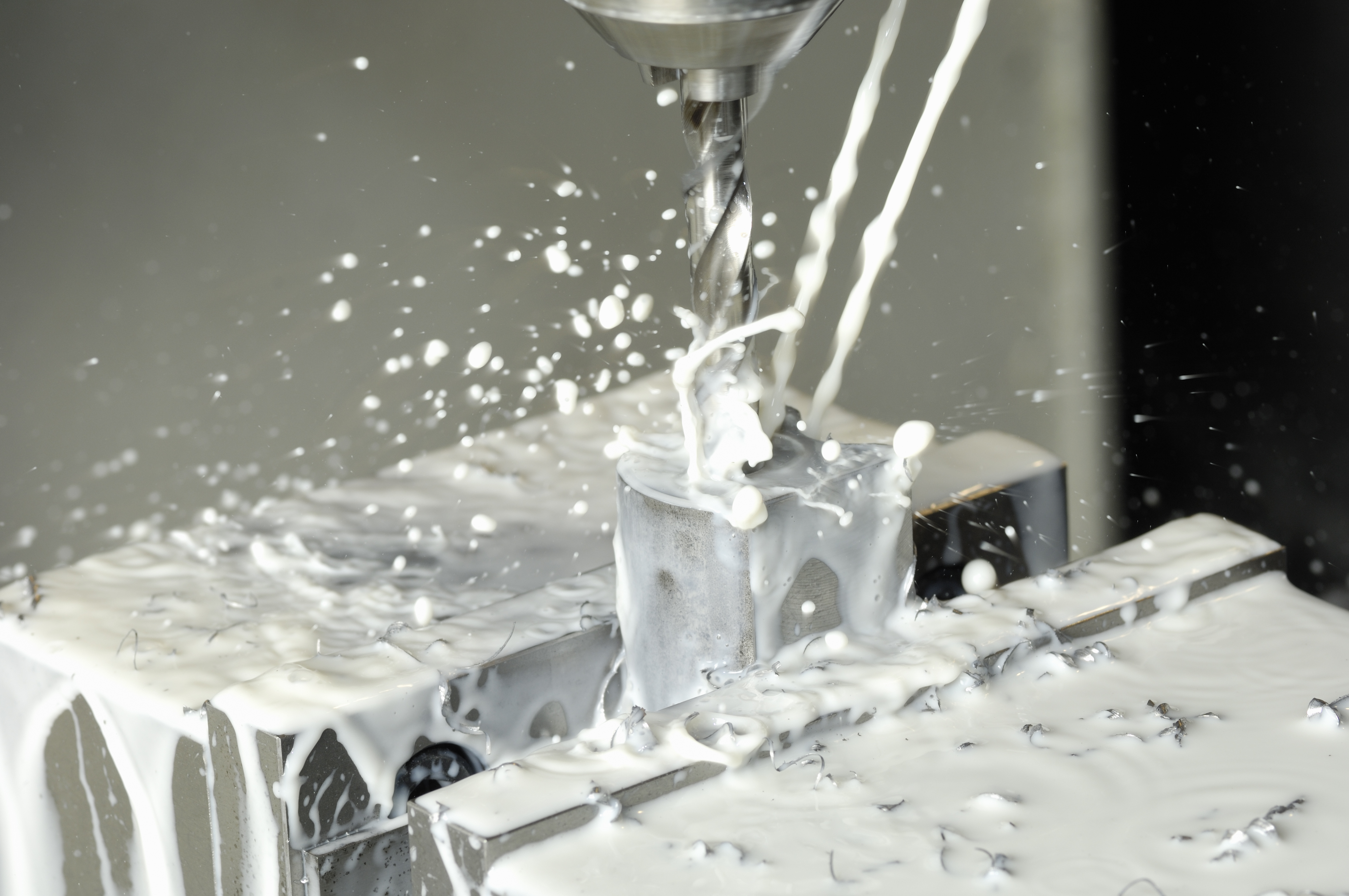Brian Halstead, an application engineer at Castrol, recommends introducing some additional coolant concentrate just prior to an extended shutdown to ensure that your fluids maintain a high level of protection for your equipment.
“If you know that a shutdown will last longer than the week or two of a normal shutdown period, ramp up your concentration to a higher level than usual,” Halstead says. “Yes, you’ll have to add more water when production levels return to normal, but at least it gives you a cushion during the shutdown period.”
No. 3: Lab-Test Your Sump Coolant Fluids Frequently
A third important factor in maintaining your fluids during a shutdown is regular laboratory testing, Brumgard says. A few companies have the means to do this on-site, but many companies don’t, and it’s an important part of detecting bacteria growth.
Typically, a pH level of 8.5 to 9 indicates your fluid is alkaline enough to ward off bacteria growth, he says. If the pH level falls too low and the fluid becomes too acidic, pH adjusters should be added to help boost it.
There are biocides and fungicides that can be added, too, if lab results indicate the growth of bacteria and fungus in fluid samples. Brumgard recommends lab testing on a weekly or biweekly basis.
“You want to make sure you’re vigilant, even if you’re not at a high-production level,” he says. “If you’re overwhelmed by a biological attack, or you have rusted bolts, all your production processes that should have been easy are going to be much harder” when you resume production, he adds.
Halstead says shutdowns can be used as an opportunity for general fluid maintenance: clearing out areas in your sump where stagnant fluid or material can collect. It’s worth changing your filters, too, to improve general cleanliness.
“We recommend increasing filter media and cleaning out the systems more,” he says. That way, when production returns to normal levels, “you’re coming back to a clean system.”






Talk to Us!
set up timer for at least 1hour per day, has helped, also occasionally skimming oils & metals out helped!
25I have a quetion about the products how do you clean the coolent and oil of your products after they come out of the machine?
43off*
34There are several different types of parts washers available if the parts you are making are relatively small. They use solvents and water. Some are heated for more aggressive cleaning. Keep in mind that heated units use different solvents with a higher flash point. For very small parts, an ultrasonic cleaner is a great option which will remove dirt and oil from the smallest crevices. A newer, more environmentally friendly option is a parts washer that uses enzymatic fluids rather than solvents.
28I'll have my sump coolant tested regularly. That sounds like a great way to make sure everything works properly. Maybe I there is a lab near me that can do the testing.
https://www.bartcotech.com/acp-2500hmfs-100/
25Leave a reply
Your email address will not be published. Required fields are marked *